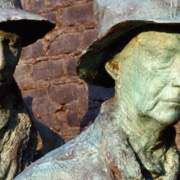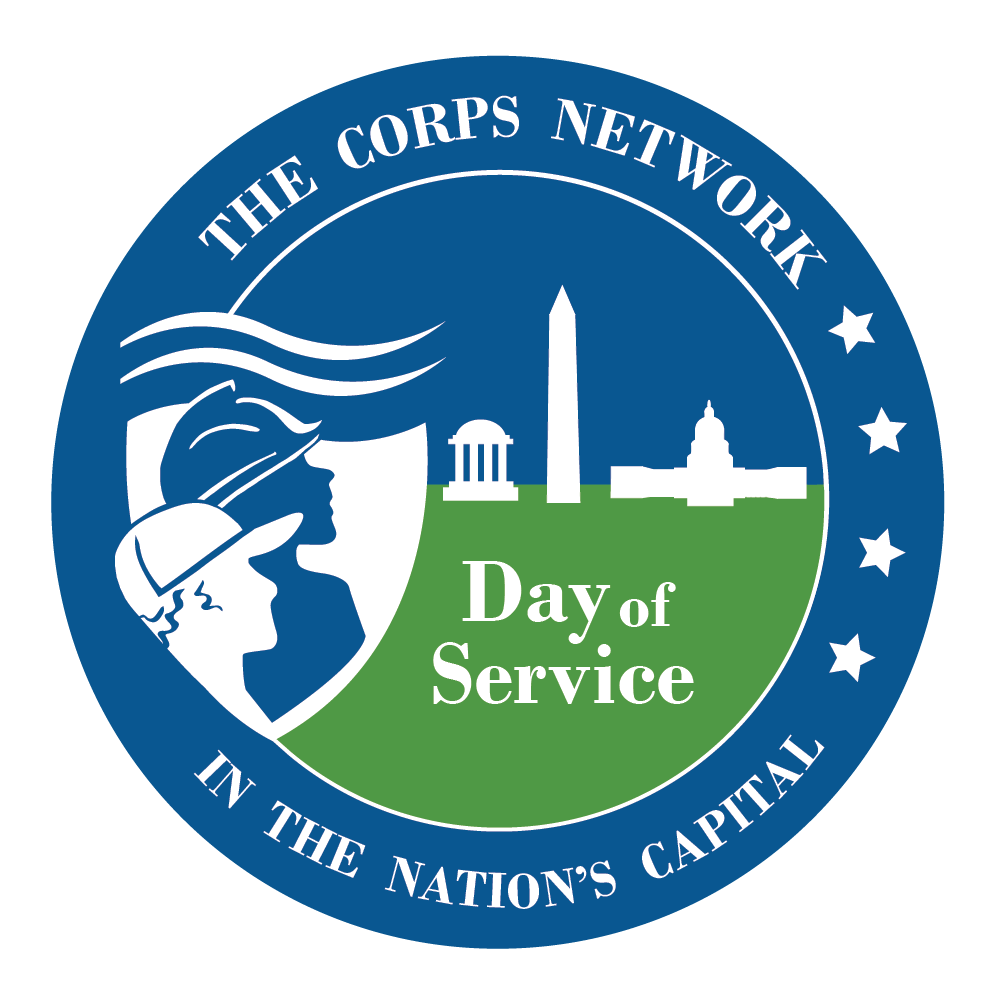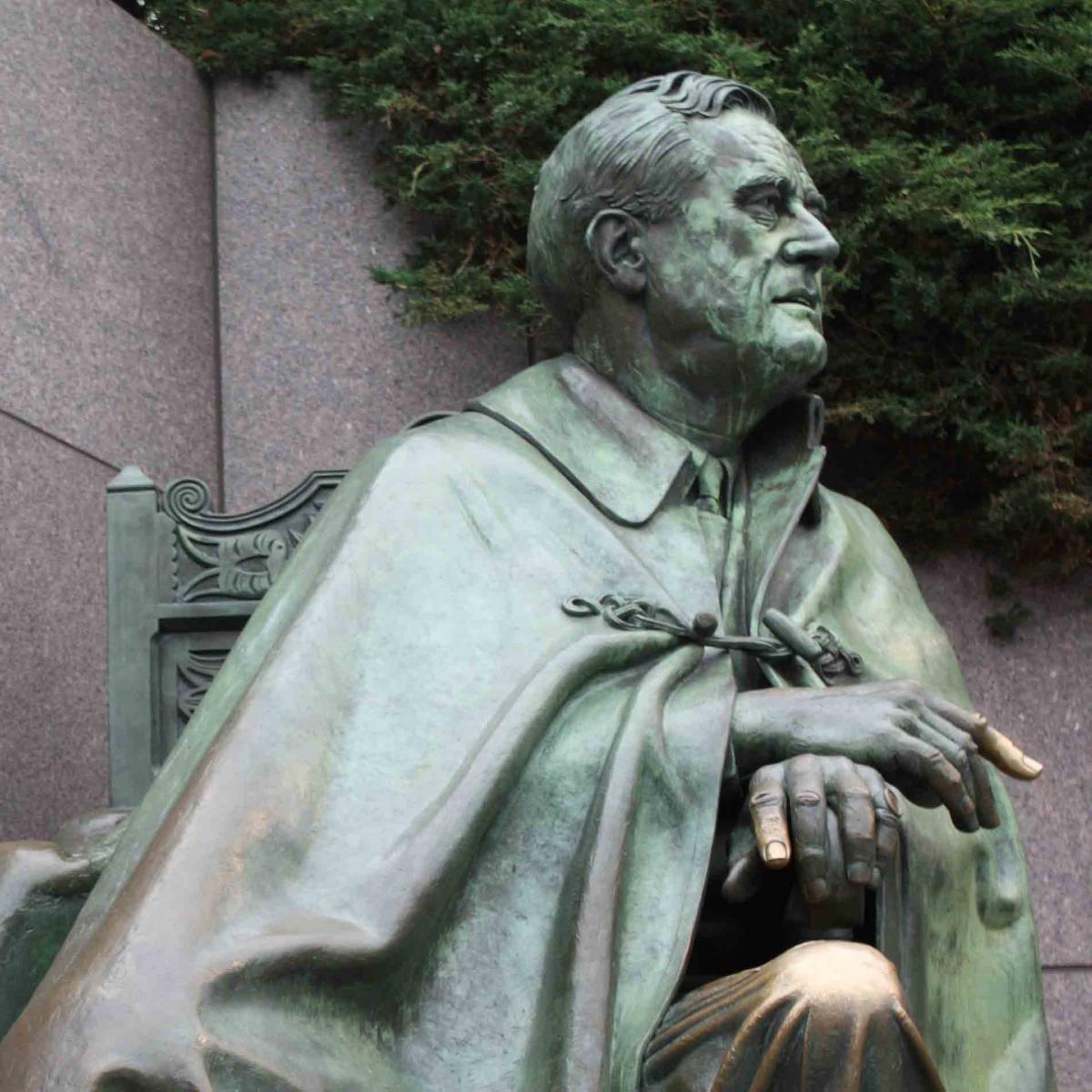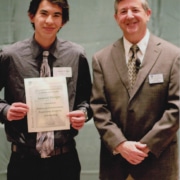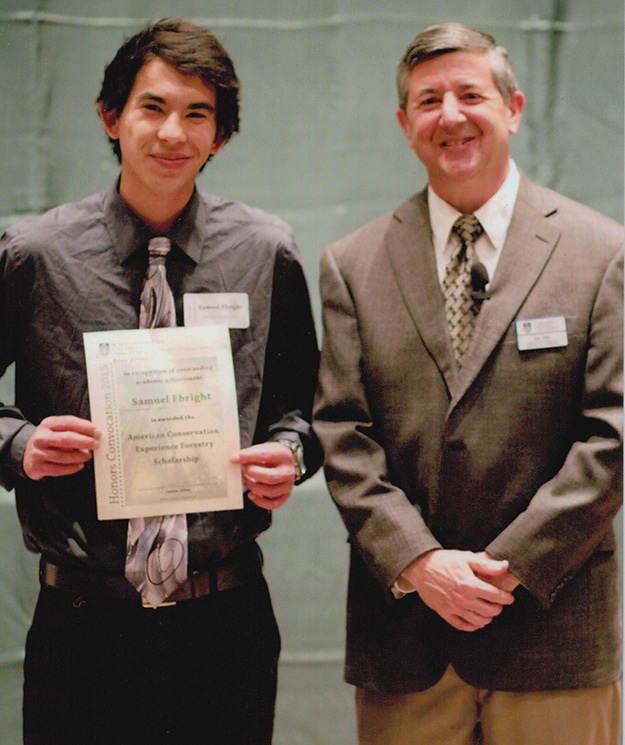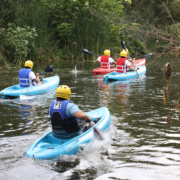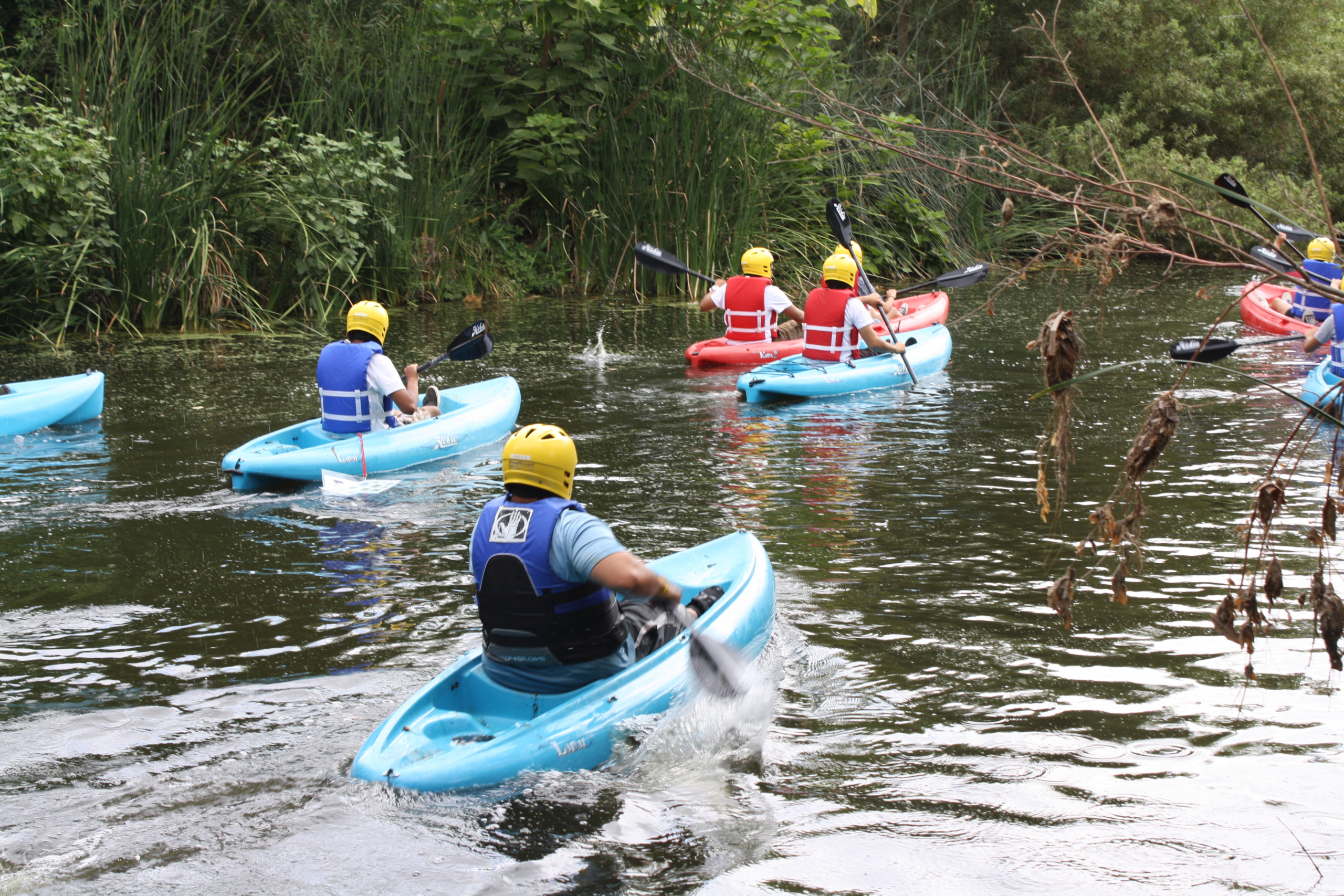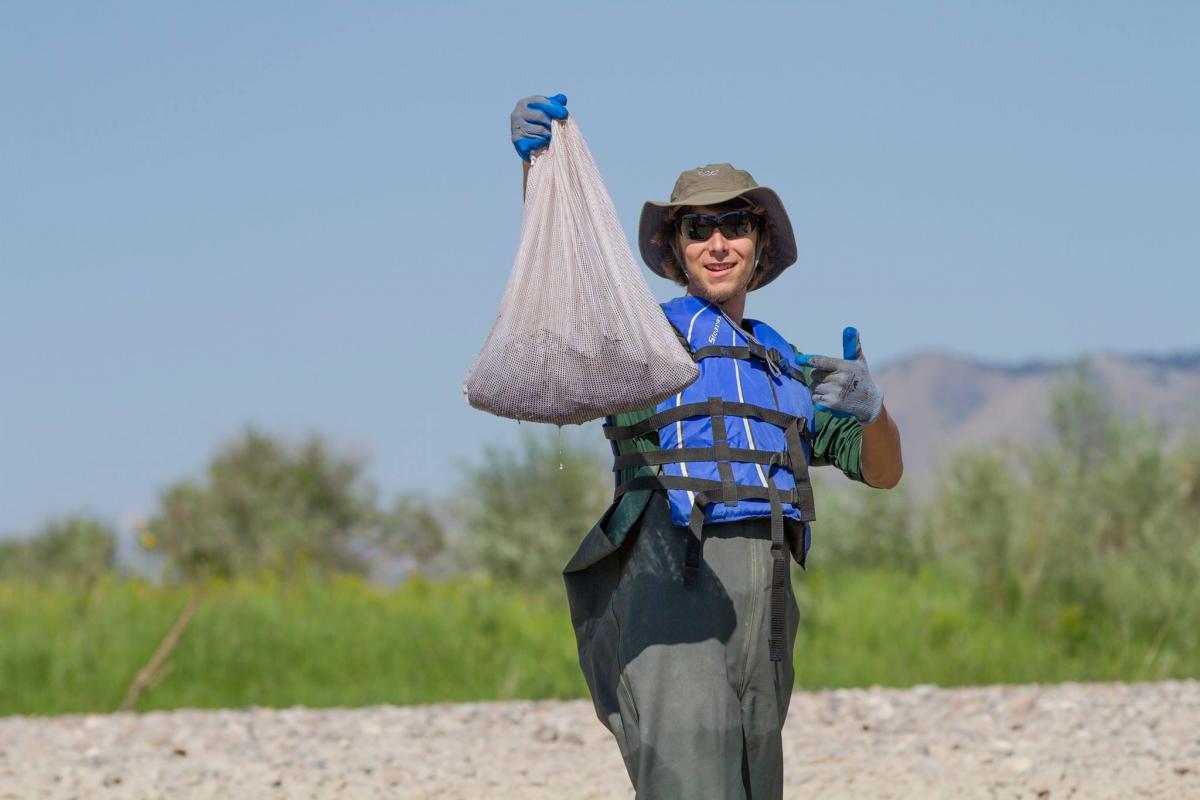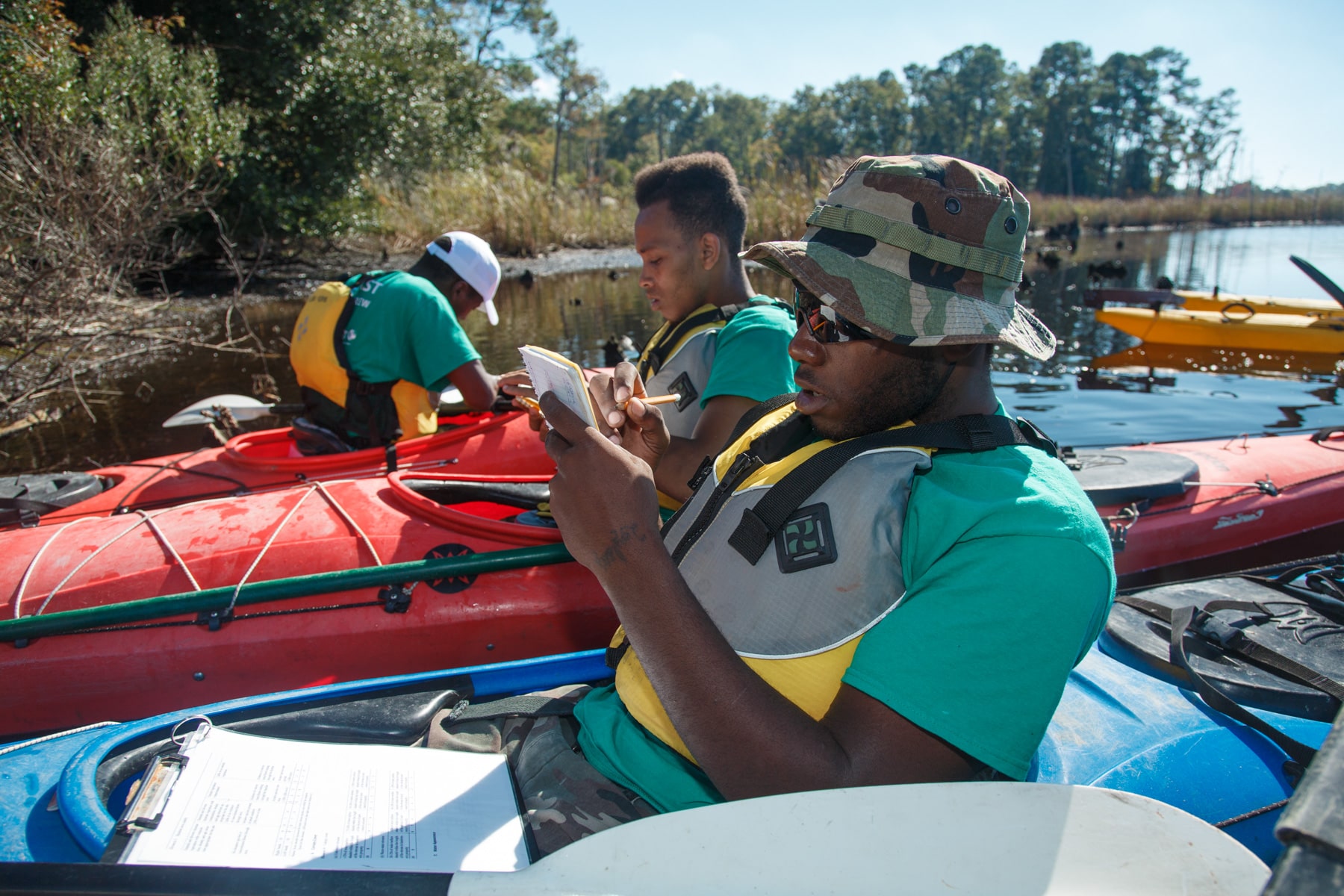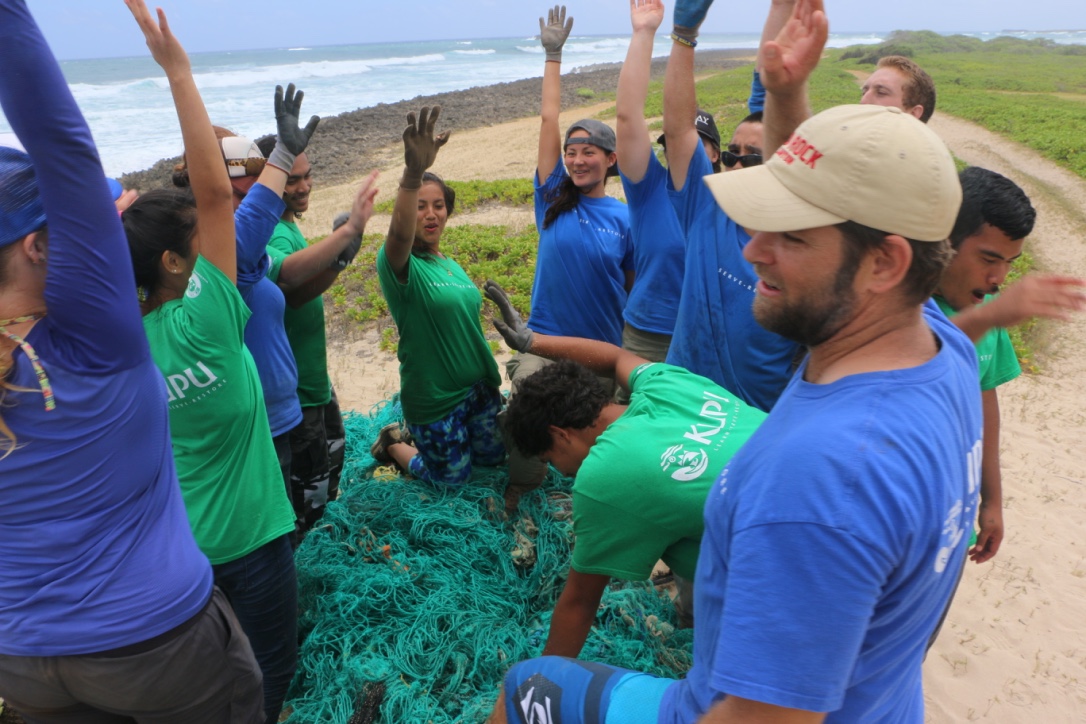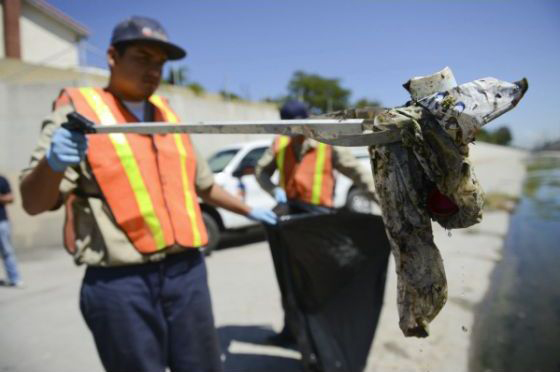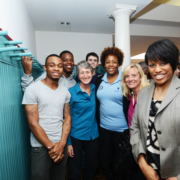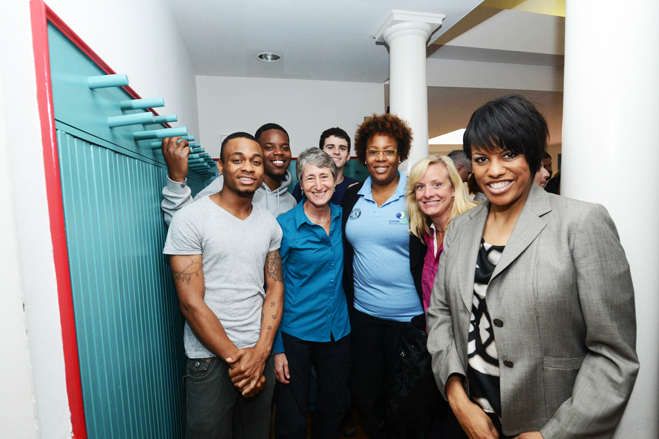Camping out with Corps: Camping tips from a Crew Leader
Many of America’s Youth Service and Conservation Corps operate programs that engage youth and young adults in backcountry land and water conservation projects. For days, or even weeks at a time, crews of Corpsmembers will camp in some of the most remote locations in the continental U.S. to fix trails, build bridges and maintain our public lands.
For the Crew Leaders who train and manage the Corpsmembers on these backcountry trips, camping is second nature. When you regularly camp with a group of teens and young adults, some of whom might have little or no outdoor experience, you need to be prepared.
Here are some expert camping tips from Brayton Noll, a former Crew Leader from Northwest Youth Corps’ (NYC) Youth Conservation Corps.
1. What do you do at the campsite during downtime?
During the first couple weeks we don’t have much downtime because everyone is getting used to the processes. They’ll have 20 minutes or so multiple times throughout the day, but most of the time we’re trying to engage them either in SEED – which is our Something Educational Every Day lesson – or playing some games.
My favorite part of NYC is that we do PHs – or personal histories. That’s where the youth get basically an evening to talk about themselves and give the crew their life story. This really bonds the crew together. We usually do that during the second week once the crewmembers know one another and the trust has been established. Ideally it takes place around the campfire and the youth just have the floor for the evening. People ask them questions at the end and they share what brought them to this point.
The youth earn high school credit while doing our program, so we have 5 – 6 weeks of structured lessons planned. We do a theme every week. The first week is living in a camping environment, so we teach them camping basics, how to get along in a group, we make group contracts, we teach them the importance of treating everyone equally. Then the second week, if I’m remembering correctly, we teach geography, we teach them about the landscape around them. The third week is, I think, botany and we teach them about the plants that are around them. We also do resume skills and mock interviews, where the youth practice interviewing and the Crew Leaders teach them skills like how to write an affective cover letter, or how to act in an interview. It’s a pretty holistic educational experience.
2. What food do you prepare when you’re camping?
NYC supplies us with all the food we need every week. We pick it up when we all meet at the weekend site. Our Program Coordinator will come out and meet all the crews and bring the coolers with all the food we need.
Our food room manager gives us a menu. The youth are doing the cooking – and often they’re new to cooking – so for the first week you generally want to follow the menu to make sure you’re not using up all the meat and cheese on the first night.
But eventually the youth begin to get creative and some really good and interesting meals…sometimes good, always interesting…come out of when the youth drop the menu and just go freeform.
The food room does a pretty decent job of mixing it up. We do a lot of Dutch oven cooking, so we’ll have deep dish pizzas, or cornbread, or burritos, or sometimes this “lasagna-ish” thing, depending on what the youth can do. During the third week of the program – we call it hump week, NYC gives the Crew Leaders $25 to spend on food for a treat. I would generally buy some steak and candy for my kids. Crew Leaders would cook for one meal that week and that would be really delicious because we don’t get steak on a normal basis.
What’s an average day like as far as the menu?
Before we go to work, so around 6:30 or 7, we’ll either have oatmeal with granola, brown sugar and raisins, or bagels with cream cheese. Then at around 10 a.m. we break and everyone eats one sandwich. Every day we generally have 2 sandwiches: one PB&J and one meat sandwich. Most of the time we would eat PB&J sandwiches around 10 o-clock with some Gold Fish or some gorp, maybe a piece of fruit. At lunch you eat your meat sandwich, maybe some more gorp, you get cookies, and some more fruit. Then in the afternoon there’s another break. Most of the time a lot of the food is gone, but we always have gorp, so people will just be snacking on that and rehydrating.
In the evening there’s dinner. All of the meals are generally pretty huge. I used to try and do the SEED lecture before dinner because after dinner the kids just sort of stuff themselves and go into a post-dinner comatose and want to go to bed once they’re done with their chores.
3. Do you have any tips for camping with a larger group?
I think being really clear. NYC has taught me to be more efficient than I ever thought I could be in regards to camping outside. So being really clear on expectations up front is very important. We have a chore sheet; it works really well to the Crew Leader’s advantage to be really diligent about filling it out and talking to the youth every day about what their responsibilities are. Each youth has an assigned chore that rotates throughout the week, so everyone gets experience cooking, everyone gets experience sharpening the tools, everyone gets experience packing food for the next day. You need to invest time upfront: five minutes explaining something now could save you an hour later.
4. Some Corpsmembers have little or no camping experience prior to joining the Corps. What would be your most valuable tip for a first-time camper?
Just try it! Some of my favorite and best youth were the ones who had very little camping experience and were just open-minded and excited about trying it. They just totally bought in. Even girls or guys who had never peed in the woods beforehand were, by the end, these hardcore campers that loved to get dirty and embraced every aspect of NYC. The prospect of all that we do can be really intimidating at first, but when you’re learning alongside you’re nine other crewmembers and your two Crew Leaders, it’s a pretty fun and rewarding experience.


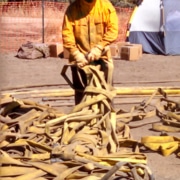

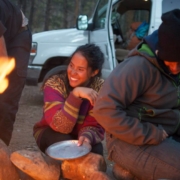
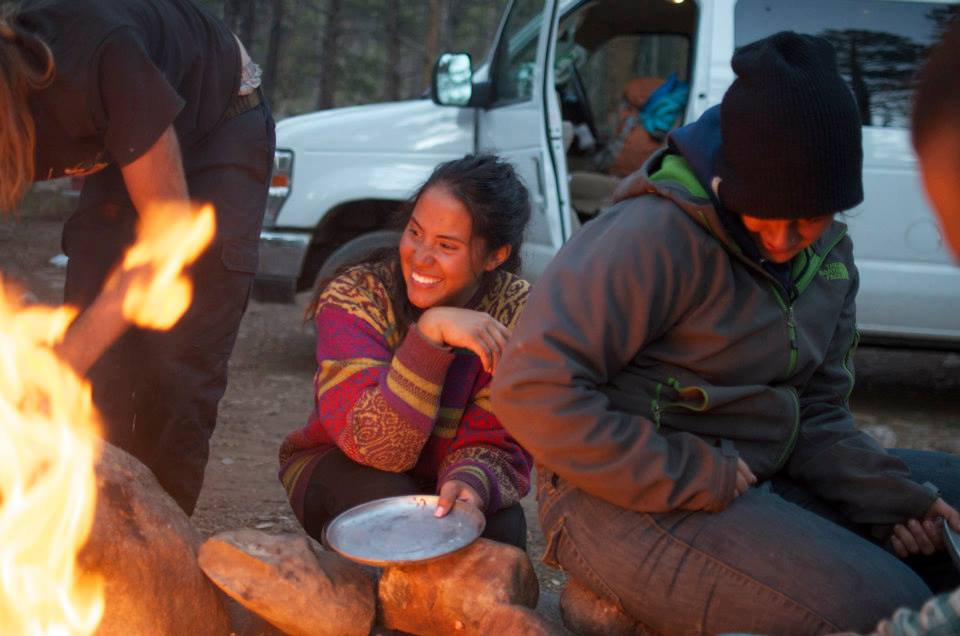
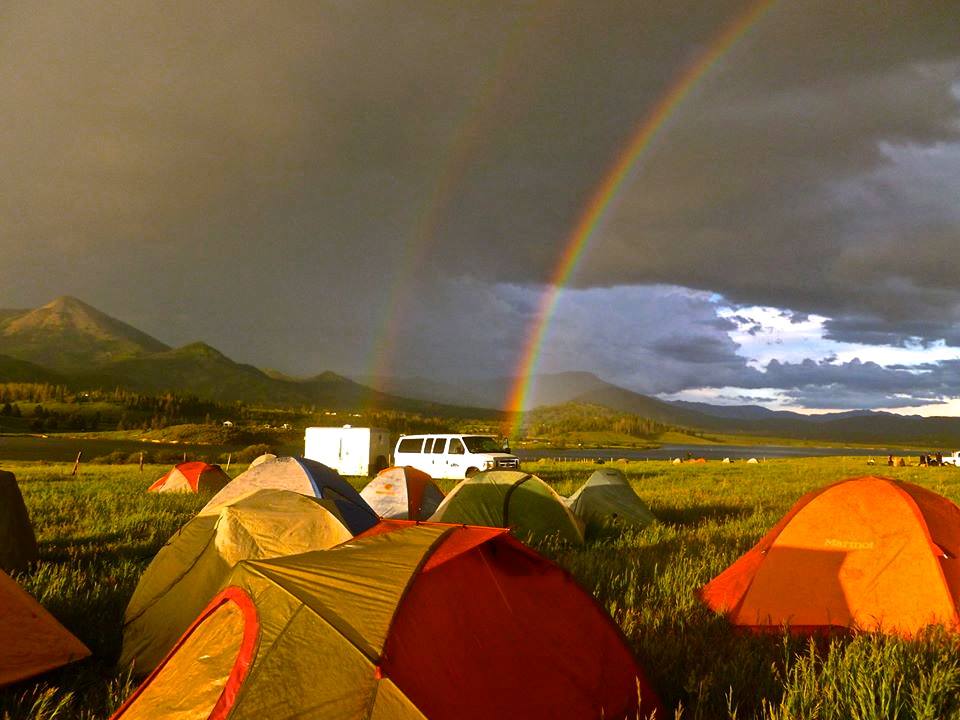
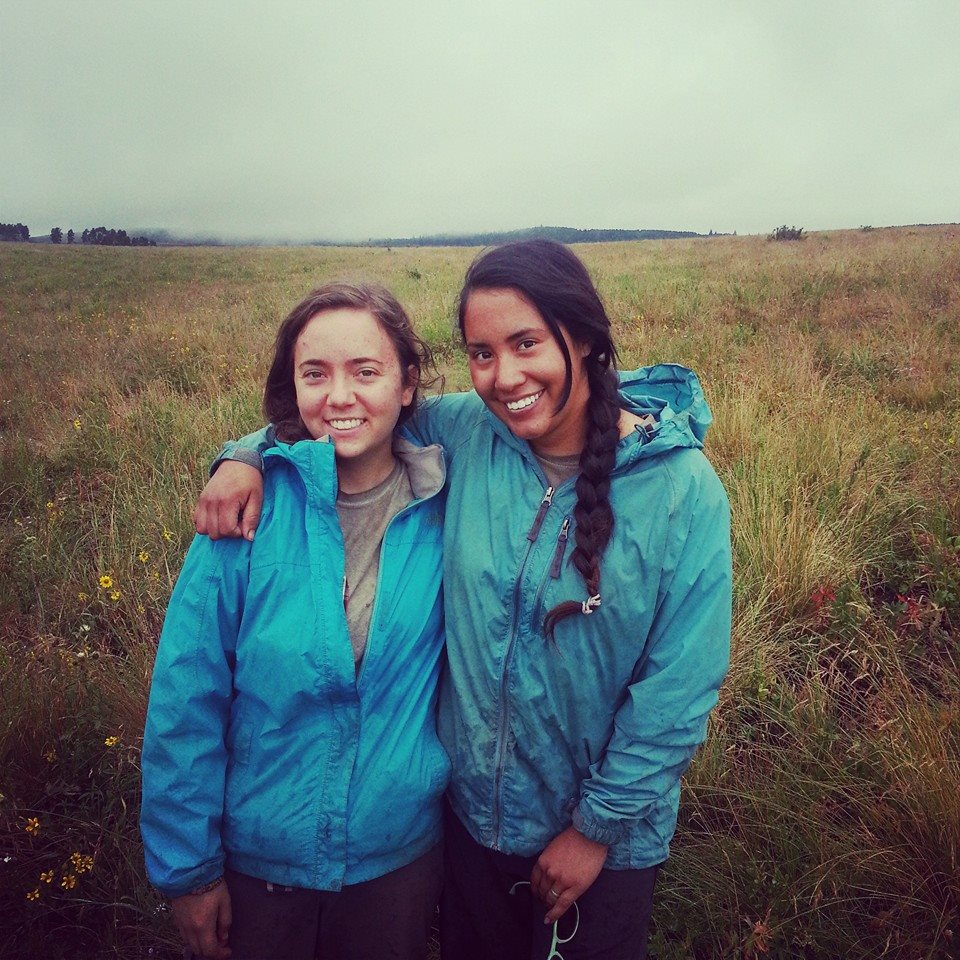 Because of all that I experienced last summer, I know I do not want to stop working hard, whether I’m camping everyday or not. I pushed myself that summer and grew because of the experience. My service experience was unforgettable.
Because of all that I experienced last summer, I know I do not want to stop working hard, whether I’m camping everyday or not. I pushed myself that summer and grew because of the experience. My service experience was unforgettable. 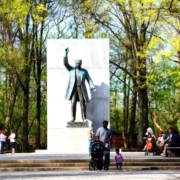
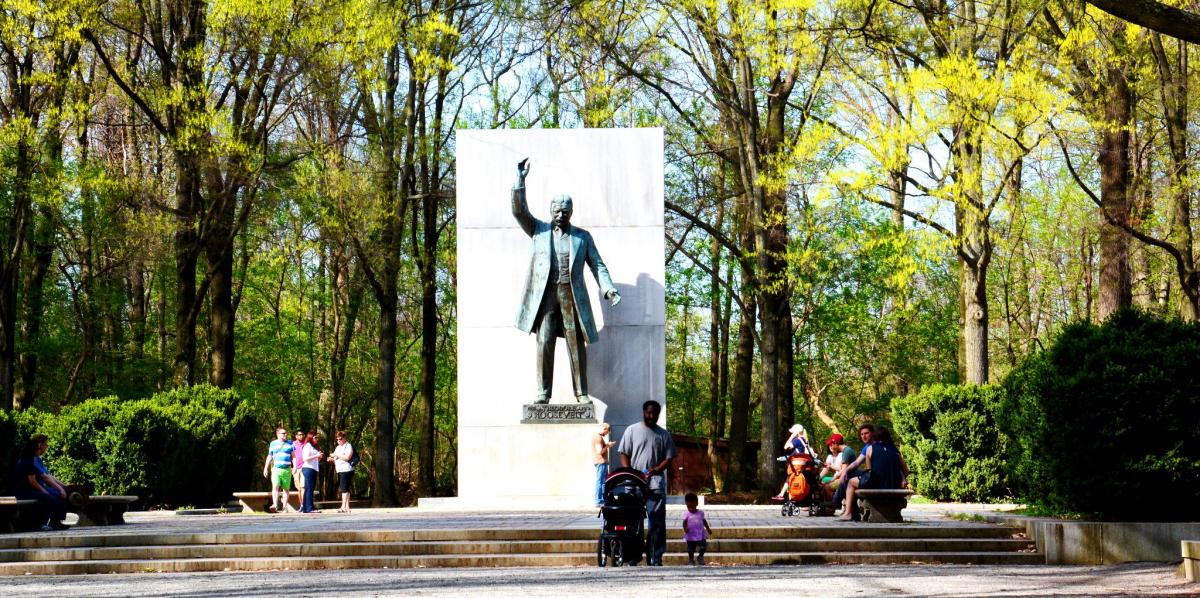
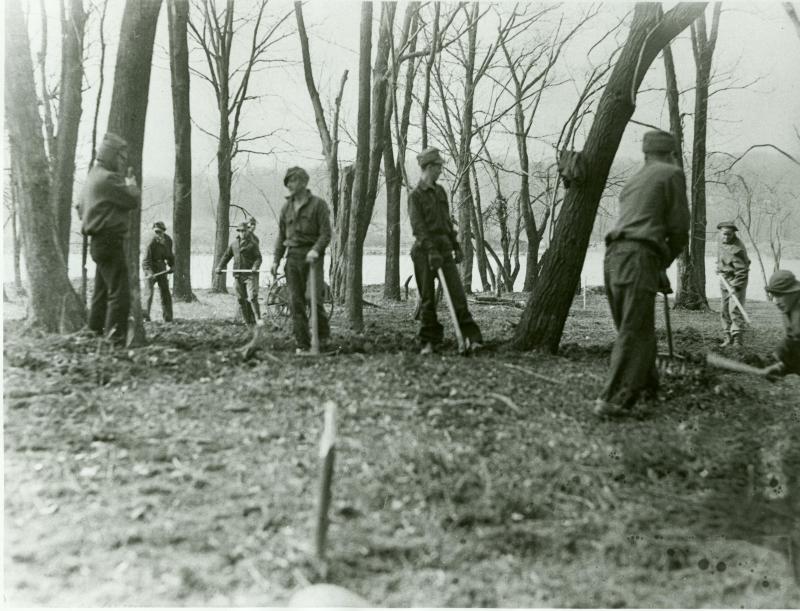 After selecting a design made by the famous landscape architect Frederick Law Olmsted, the Civilian Conservation Corps (shown right) implemented the plan.
After selecting a design made by the famous landscape architect Frederick Law Olmsted, the Civilian Conservation Corps (shown right) implemented the plan. 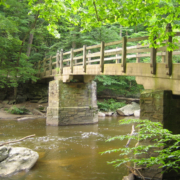
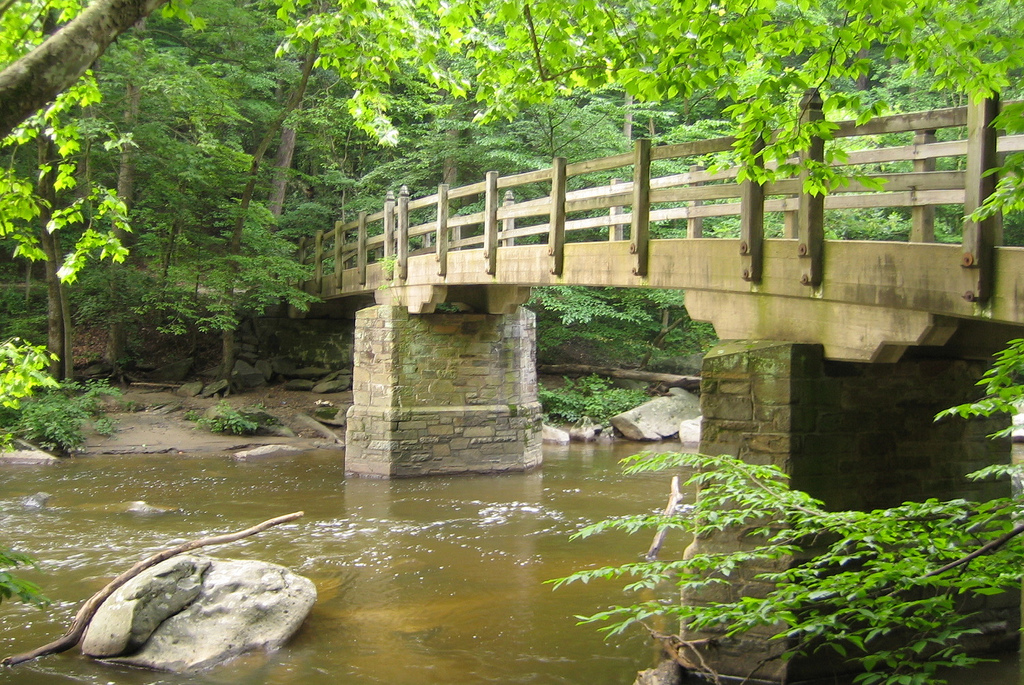
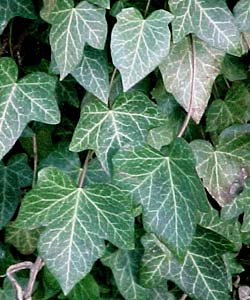 English Ivy (shown in a National Park Service photo to the right) is an invasive plant species and poses a threat to the integrity of the park’s ecosystem. The ivy plants can reach a length of over 100 feet and can invade woodlands, fields, and other upland areas. This means they can grow along the ground where they can disrupt the lifecycle of understory species. Ivy plants are also capable of growing up into the tree canopy and branches, which kills the trees slowly.
English Ivy (shown in a National Park Service photo to the right) is an invasive plant species and poses a threat to the integrity of the park’s ecosystem. The ivy plants can reach a length of over 100 feet and can invade woodlands, fields, and other upland areas. This means they can grow along the ground where they can disrupt the lifecycle of understory species. Ivy plants are also capable of growing up into the tree canopy and branches, which kills the trees slowly.